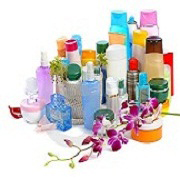The latest updates from Kline’s Personal Care Ingredients: Market Analysis describe recently implemented and proposed regulations, ongoing and pending investments within the industry, and new product launches. Additionally, the update explores how the industry is responding to silicone concerns within formulations.
From a regulatory perspective, Brazil’s Health Agency, Anvisa, recently announced new regulations restricting the use of lead acetate, pyrogallol, formaldehyde, and paraformaldehyde within personal care product formulations. Concurrently, the U.S.-based Natural Products Association has noted a 50% increase over 2012 in the certification rate of new natural products.
Key highlights within the personal care industry include the significant and on-going rise of multitasking products, such as BB and CC creams, remaining one of the defining trends of 2013. BB cream is marketed as an all-in-one facial cosmetic product to replace serum, moisturizer, primer, foundation and sunblock, while CC creams are refined and lighter versions of BB creams. Brands including Clinique, Dior, Estée Lauder, and Garnier offer BB creams, and Chanel, Olay, L’Oréal, and Lancôme offer CC creams.
Also of note, anti-aging as a functionality is continuing its unabated growth in emerging and developed markets with anti-aging solutions in hair care in particular surfacing as a major trend in 2013 with many brands, primarily in the U.S. and Japanese markets, incorporating anti-aging properties in conditioning agents, sunscreens, and moisturizers.
Additionally, the demarcation between sun care products and skin care products is increasingly fluid, as products in these respective segments are including claims and benefits from the other. Examples include Olay’s Regenerist DNA superstructure UV cream and Estée Lauder’s Re-Nutriv Sun supreme rescue serum. Food-sourced ingredients such as lecithin, carrageenan, are also of interest, continuing to emerge as a key trend in the personal care cosmetics industry.
With silicones’ near ubiquity and versatility, any inauspicious press – whether substantiated or not – has consequences. Although both Environment Canada and the EU Commission’s Scientific Committee on Consumer Safety concluded that selected silicones posed no risk to human health, many consumer groups, NGOs, and other organizations are propagating potential dangers of silicones to humans and the environment. Kline’s latest industry update assesses how real the potential threat to this USD 700+ million market may be, and explores possible application dependent alternatives, citing the latest products available. Despite just hearsay evidence of any dangers inherent in silicones, some marketers are preemptively touting silicone-free products.
Published mid-year, Personal Care Ingredients: Market Analysis provides demand estimates for key regional markets including Europe, the United States, Japan, China, Southeast Asia, and India. It includes an interactive database containing data on over 100 personal care ingredients, eight groups of personal care ingredients, and serving six key regions. The interactive functions of the database allow users to customize views according to supplier, ingredient type, and application. Additionally, the report is complemented by tri-annual industry updates.
Join Nikola Matic and Zachary Ferrara at in-cosmetics Asia in Bangkok, Thailand, October 29 – 31, 2013, as they deliver their insightful “Asian Personal Care Ingredients and Natural Personal Care Markets” presentation.

